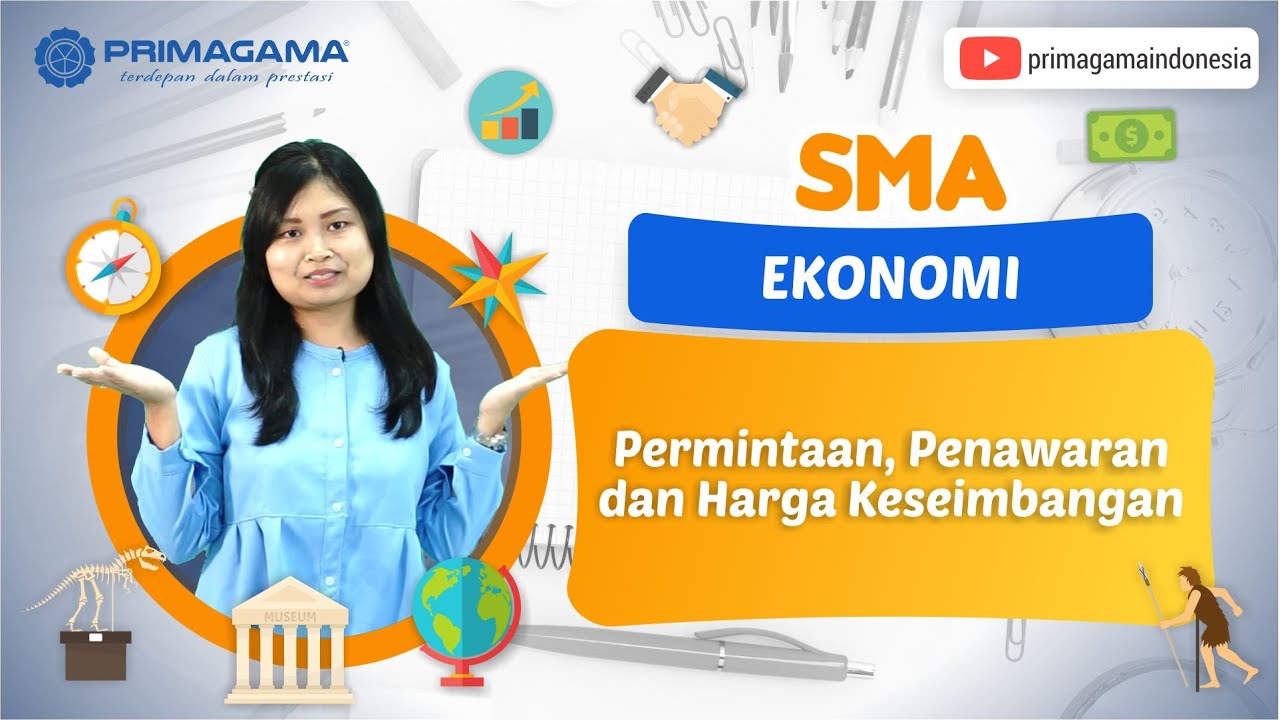CUNG CẦU - TRÒ CHƠI KÉO CO GIỮA KẺ BÁN VÀ NGƯỜI MUA? | CÂU CHUYỆN KIẾN THỨC
Summary
TLDRThe video explains the fundamental economic concept of supply and demand using relatable examples, such as the price of lobster and beef. It covers how changes in price, income, and consumer preferences can affect demand and supply. The video also discusses how these factors influence market equilibrium, where the amount of goods consumers are willing to buy equals what suppliers are willing to sell. Through simple and practical examples, it illustrates how the economy adjusts to find balance, and how understanding supply and demand is key to grasping more complex economic principles.
Takeaways
- 😀 The story of Tôm Hùm illustrates how demand and supply affect the price of goods over time, from being a cheap meal to a luxury dish.
- 😀 Demand (cầu) refers to the willingness and ability of consumers to purchase goods at a specific price, reflecting both their desire and financial capability.
- 😀 Quantity demanded changes with price fluctuations: when prices rise, quantity demanded typically decreases, and when prices drop, demand increases.
- 😀 Factors like income and alternative goods affect demand: if a person's income increases or other goods become cheaper, demand for a product may increase.
- 😀 Supply (cung) represents the amount of goods sellers are willing to offer at a specific price, and can also fluctuate depending on external factors.
- 😀 When the price of a product rises, suppliers are often more motivated to increase the quantity they offer for sale, leading to a higher supply.
- 😀 Supply can decrease if the cost of production rises (e.g., higher feed prices for cattle) or if other conditions make production less viable.
- 😀 Technology improvements (e.g., automated cattle farming) can increase supply by making production more efficient.
- 😀 Government policies, such as higher taxes, can decrease supply by raising the cost of production.
- 😀 The balance between supply and demand determines the market equilibrium, where the quantity supplied equals the quantity demanded at a certain price, ensuring both buyers and sellers are satisfied.
Q & A
What is the concept of 'supply and demand' as explained in the video?
-Supply and demand describe the relationship between the amount of a product available (supply) and the desire of buyers for it (demand). The principle states that when the supply increases, the price tends to decrease, and when demand increases, the price tends to rise.
How does the demand for goods work in relation to price?
-Demand is the willingness and ability of consumers to purchase goods at a certain price. As the price of a product increases, the demand typically decreases, and as the price decreases, the demand tends to increase.
Can you explain how changes in a consumer’s income affect demand?
-When a consumer's income increases, they are generally willing to purchase more goods, increasing demand. Conversely, when income decreases, demand for certain products may also decrease, as consumers have less purchasing power.
What is the impact of market trends and preferences on demand?
-Market trends and consumer preferences can significantly influence demand. For example, when a previously low-status item, like lobster, becomes fashionable, demand can rise dramatically, even if it was once considered a cheap or lower-class food.
How does the price of complementary goods affect demand?
-The price of related goods can also impact demand. If the price of a complementary good, such as food for cattle, increases, it may lead to a decrease in demand for cattle since consumers may find it too costly to raise them.
What does the 'supply' side of the economy represent?
-Supply represents the quantity of goods that producers are willing and able to offer for sale at a particular price over a specific time period. The amount of supply can change based on factors such as production costs and technology.
How does the price of goods influence the supply side?
-When the price of goods increases, producers are generally motivated to supply more of the product because they can earn higher profits. Conversely, if the price decreases, the supply may also decrease as producers may find it less profitable to sell the goods.
How can technological advancements impact supply?
-Technological advancements can improve production efficiency, which increases the supply of goods. For instance, automated farming technologies can allow farmers to produce and supply more cattle at a lower cost.
What happens when the market reaches a state of equilibrium between supply and demand?
-At equilibrium, the quantity of goods supplied matches the quantity demanded at a specific price. This results in a market balance where both consumers and producers are satisfied with the price and quantity available.
What is the effect of government policies on supply?
-Government policies, such as taxation or subsidies, can have a significant impact on supply. For example, if the government imposes higher taxes on cattle farming, the cost of production increases, which may lead to a decrease in supply.
Outlines

Этот раздел доступен только подписчикам платных тарифов. Пожалуйста, перейдите на платный тариф для доступа.
Перейти на платный тарифMindmap

Этот раздел доступен только подписчикам платных тарифов. Пожалуйста, перейдите на платный тариф для доступа.
Перейти на платный тарифKeywords

Этот раздел доступен только подписчикам платных тарифов. Пожалуйста, перейдите на платный тариф для доступа.
Перейти на платный тарифHighlights

Этот раздел доступен только подписчикам платных тарифов. Пожалуйста, перейдите на платный тариф для доступа.
Перейти на платный тарифTranscripts

Этот раздел доступен только подписчикам платных тарифов. Пожалуйста, перейдите на платный тариф для доступа.
Перейти на платный тарифПосмотреть больше похожих видео
5.0 / 5 (0 votes)






